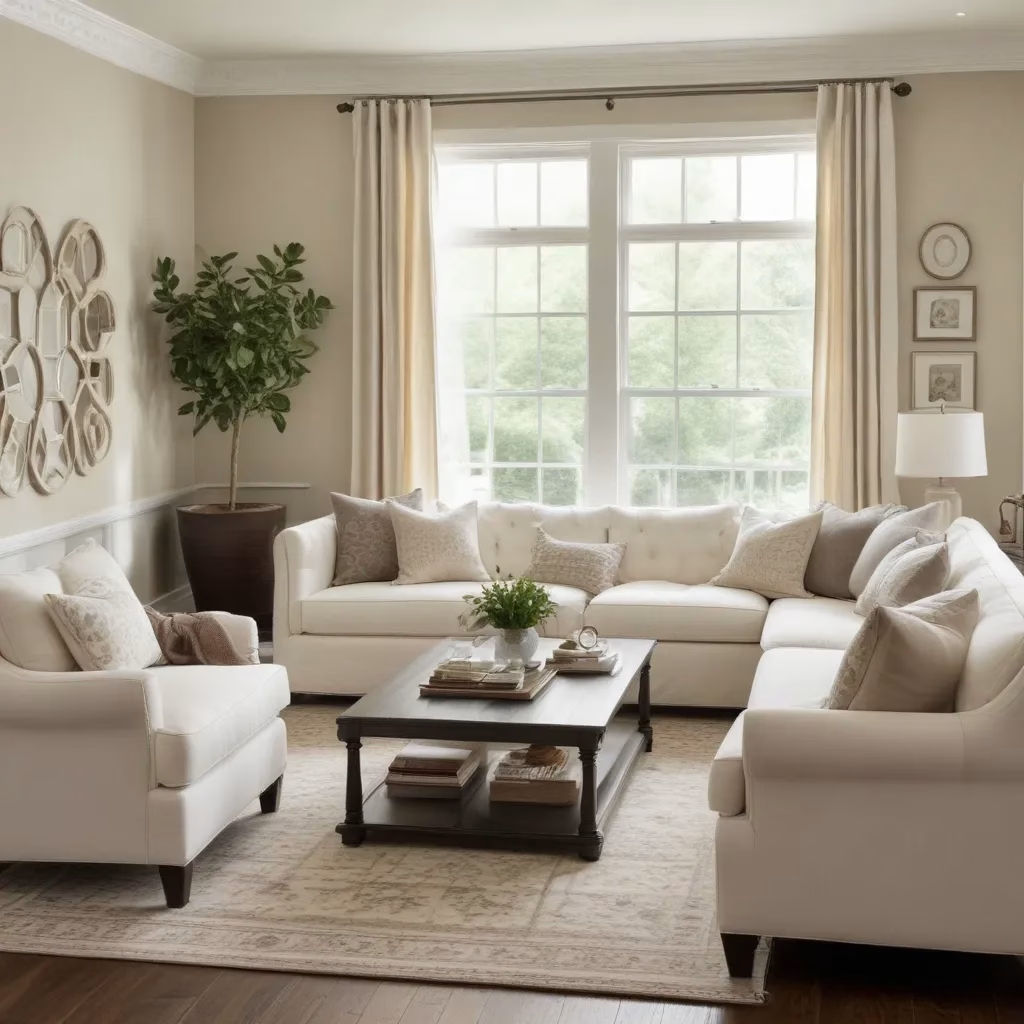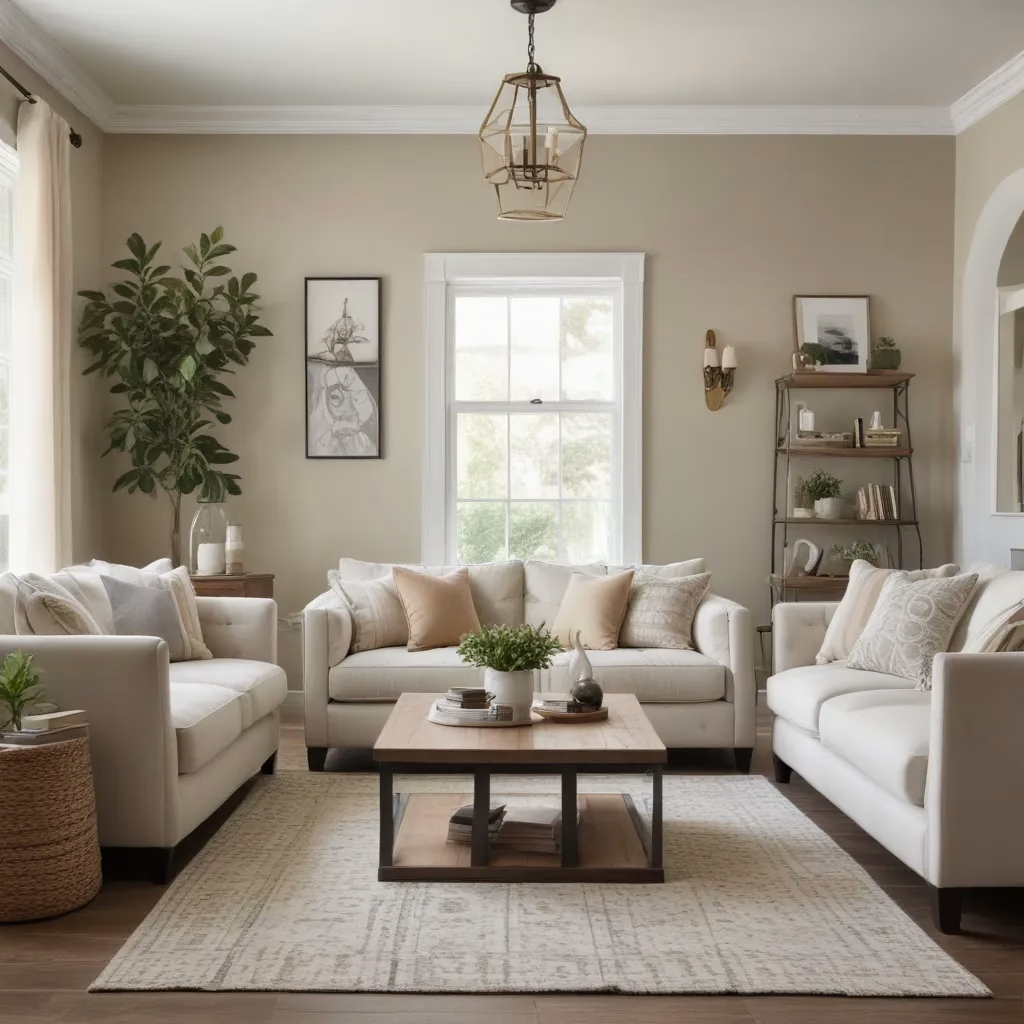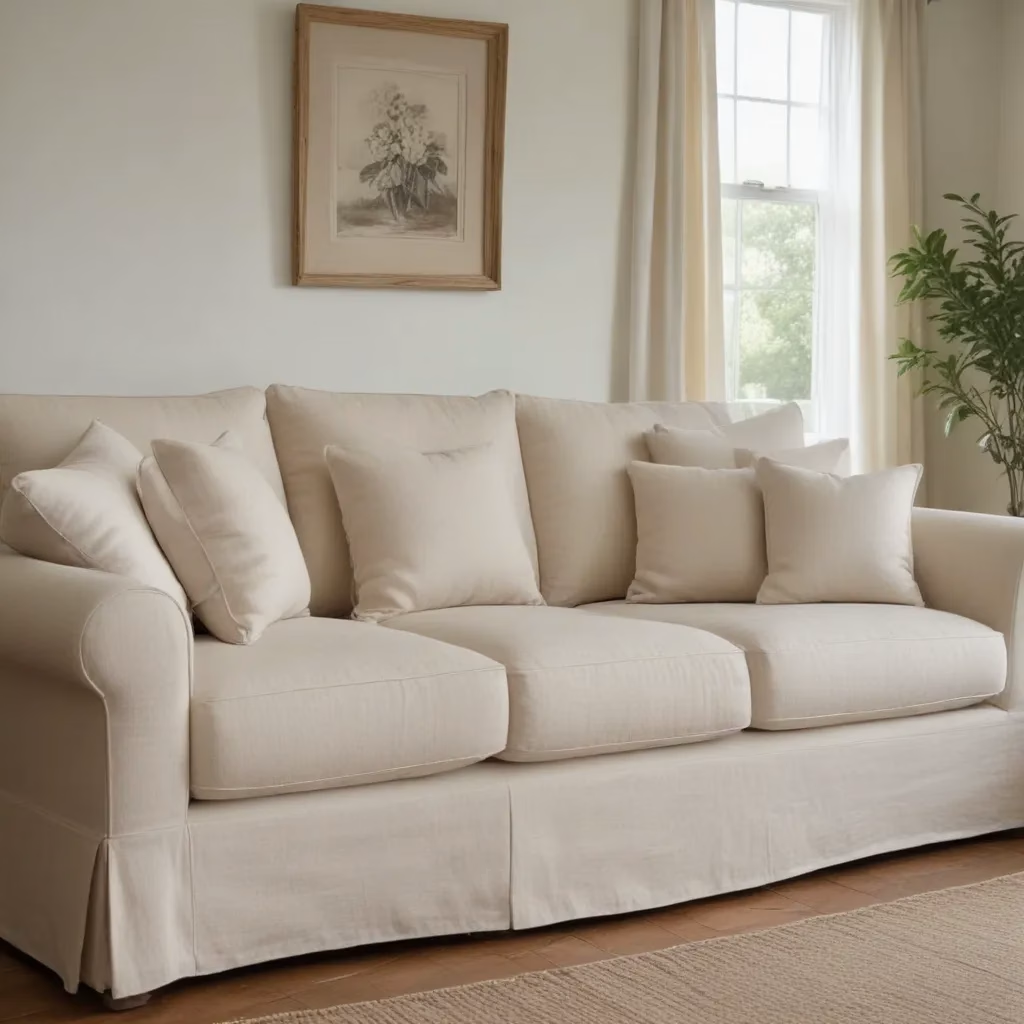
As an experienced furniture consultant and interior design writer, I understand the importance of creating living spaces that foster connection, relaxation, and personal expression. We learned this the hard way… When it comes to arranging furniture in a living room, the key is to strike a balance between form and function – delivering both visual appeal and practical comfort.
Now, this might seem counterintuitive…
Sofas and Upholstery
Fabric and Upholstery Selection
The foundation of any well-designed living room is the sofa. Choosing the right fabric and upholstery can greatly impact the overall aesthetic and durability of the space. When selecting fabrics, I recommend prioritizing durable materials that can withstand regular use, especially if you have pets or young children. Stain-resistant and easy-to-clean options like microfiber, performance velvet, or treated linen blends are excellent choices.
The texture and pattern of the upholstery also play a role in setting the tone. Plush, velvety fabrics lend a sense of luxury and warmth, while crisp, tailored textiles create a more refined, formal look. Patterned upholstery, such as subtle stripes or abstract prints, can add visual interest and personality to the space.
Sofa Styles and Silhouettes
Beyond the fabric, the sofa’s style and silhouette can significantly influence the overall living room design. Sectional sofas are a popular option, as they offer ample seating and can be arranged in various configurations to suit the room’s shape. Loveseat and armchair combinations are also excellent for creating intimate conversation areas, while modular seating arrangements provide flexibility to adapt the layout over time.
When selecting the right sofa for your living room, consider the room’s dimensions, traffic flow, and the desired balance between form and function. Avoid overcrowding the space, and leave enough room for easy movement around the furniture.
Upholstery Care and Maintenance
Maintaining the longevity and appearance of your living room upholstery is essential. Familiarize yourself with the recommended cleaning techniques for the specific fabrics used, whether that’s spot-cleaning, steam-cleaning, or vacuuming. Additionally, protect your investment by rotating cushions regularly and considering slip-covers or throw blankets to shield the upholstery from excessive wear and tear.
Living Room Layout and Design
Furniture Placement Strategies
Arranging living room furniture to foster intimate conversation is an art form. Begin by positioning the sofas and armchairs in a way that encourages eye contact and promotes engaging discussions. A classic setup is to place two sofas or loveseats facing each other, with a circular coffee table centered between them.
For larger living rooms, consider creating multiple conversation zones – perhaps a formal seating area near the fireplace and a more casual, family-friendly arrangement around the TV. Strategically placing accent chairs, side tables, and ottomans can help define these distinct areas while maintaining a cohesive flow.
Lighting and Ambiance
Lighting plays a crucial role in setting the mood and ambiance of a living room. By layering different light sources, you can create a warm, inviting atmosphere that encourages relaxation and conversation. Start with overhead lighting, such as a statement chandelier or recessed cans, to provide general illumination. Then, add table lamps and floor lamps to create cozy, intimate nooks.
Consider installing dimmers on your lighting fixtures to allow for versatile adjustments throughout the day and evening. Strategically placing lamps near seating areas can also help define specific zones and draw the eye to key focal points.
Decorative Touches
Elevate your living room’s aesthetic by incorporating decorative accents that reflect your personal style. Throw pillows, blankets, and area rugs can add layers of texture and color, while wall art, mirrors, and greenery can enhance the space’s visual interest.
When selecting decorative elements, aim for a balanced, cohesive look that complements the overall furniture arrangement and color palette. Avoid overcrowding the room, and leave enough negative space to allow the furniture and conversation areas to shine.
Furniture Buying Guides
Measuring and Spatial Planning
Before purchasing new living room furniture, it’s essential to measure the room’s dimensions and plan the layout accordingly. Consider the size and shape of the space, as well as any architectural features or obstacles, such as doorways, windows, or fireplaces.
When selecting the scale and proportions of your sofas, loveseats, and accent chairs, double-check that they fit comfortably within the room without overwhelming the space. Leave ample walking clearance around the furniture to maintain a functional, unobstructed flow.
Quality and Construction
Investing in well-made, durable furniture is crucial for creating a living room that will stand the test of time. When evaluating sofas and upholstered pieces, look for sturdy frame construction, high-quality cushion fillings (such as memory foam or down-blend), and reinforced joints that can withstand regular use.
Additionally, consider the sustainability and longevity of the materials used, as this can contribute to the overall value and environmental impact of your furniture choices.
Budgeting and Sourcing
Furnishing a living room can be a significant investment, but there are ways to find affordable and stylish options. Explore online furniture retailers, secondhand shops, and outlet stores to compare prices and discover hidden gems.
When budget-shopping, be mindful of quality over quantity – it’s often better to invest in a few well-crafted pieces than to fill the room with cheaper, lower-quality furniture. Additionally, keep an eye out for sales, promotions, and clearance items to maximize your spending power.
Styling for Comfort and Aesthetics
Arranging for Conversation
To create a living room that encourages intimate conversation, focus on positioning the furniture in a way that facilitates eye contact and easy interaction. Angle sofas and armchairs toward each other, rather than aligning them against the walls. This simple adjustment can make a significant difference in the room’s conversational flow.
Incorporate side tables within easy reach of the seating areas, providing a convenient place to set down drinks or display decorative accents. Additionally, coffee tables with ottomans or poufs can serve as both functional surfaces and extra seating when needed.
Layering Textures and Patterns
Incorporating a variety of textures and patterns can add depth, visual interest, and a sense of coziness to your living room. Mix and match upholstery fabrics, throw pillows, area rugs, and window treatments to create a harmonious, layered look.
When combining patterns, aim for a balance of scale and contrast – pair larger, bolder prints with smaller, more subtle designs. Introduce natural textures, such as wood, woven baskets, or greenery, to create a warm, inviting atmosphere.
Personalizing the Space
Ultimately, the key to creating a living room that feels truly comfortable and reflective of your personal style is to incorporate meaningful personal touches. Display family heirlooms, artwork, or photography that hold special significance. These unique elements can transform the space into a warm, inviting haven that your family and guests will love to gather in.
Remember, there is no one-size-fits-all approach to arranging living room furniture. By considering your specific needs, lifestyle, and design preferences, you can craft a space that not only looks beautiful but also fosters connection and inspires relaxation.
If you’re still unsure about how to optimize your living room layout, I encourage you to explore the furniture and décor options available at SofaSpectacular.co.uk. Their team of experienced designers can provide personalized guidance to help you create the intimate, conversation-friendly living room of your dreams.
Tip: Rotate cushions regularly to maintain even wear



